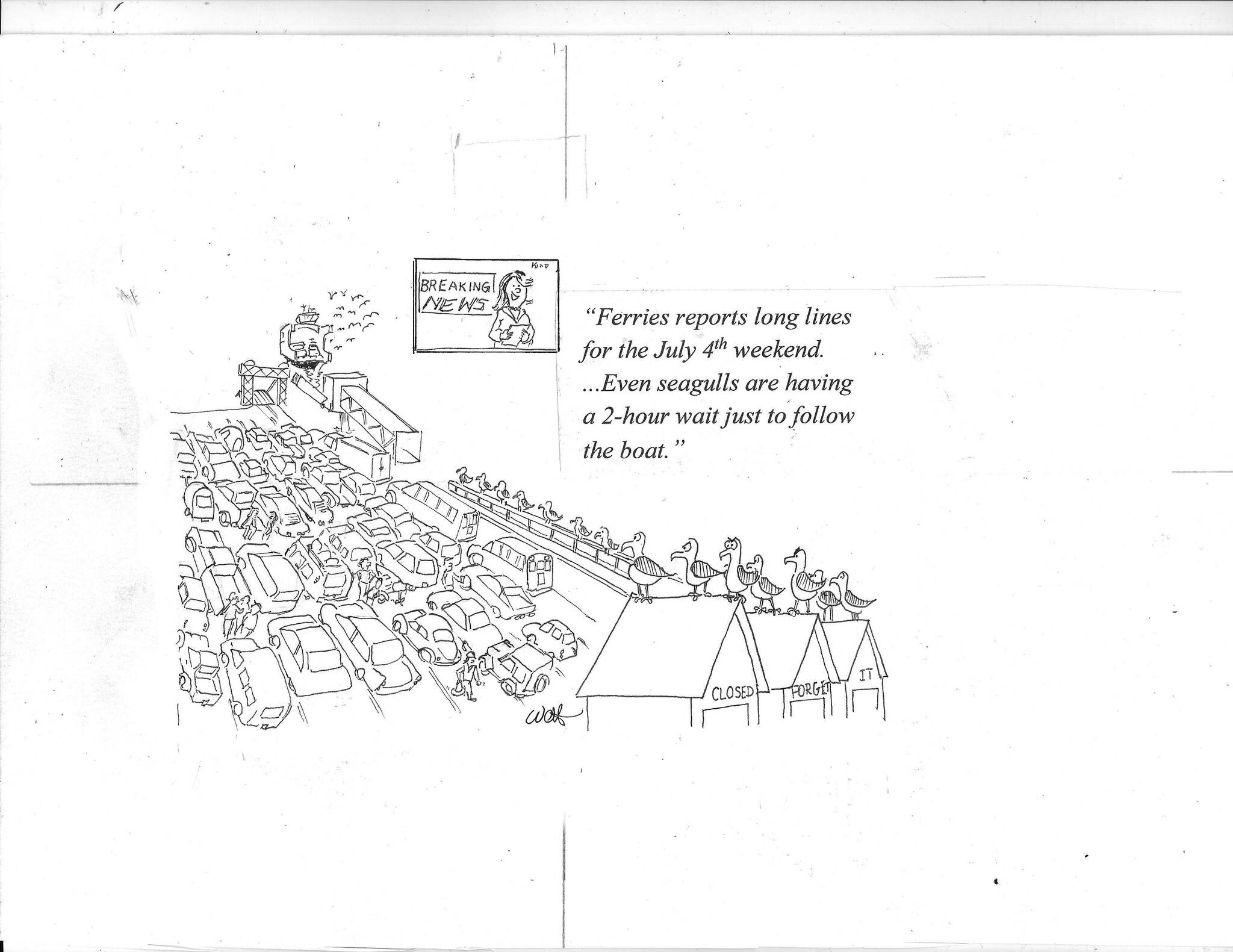After 20 months struggling to staff boats during COVID absenteeism, Washington State Ferries threw in the towel when Gov. Jay Inslee’s October vaccination mandate kicked in. Runs were cut systemwide to relieve the pressure of scraping crews together and produce more reliable schedules.
While San Juan runs were restored, the recipe for restoring runs elsewhere appeared to mimic Shakespeare’s Hamlet:
“Double, double toil and trouble.
Cool it with a baboon’s blood,
Then the charm is firm and good.”
By April WSF had put out its strategy in a 20-page lump. Here’s the short version. Ferry routes were ranked: 1) San Juan Islands, 2) Bainbridge Island, 3) Mukilteo/Clinton, 4)Edmonds/Kingston, 5) Vashon Island/Southworth triangle, 6) Bremerton, and 7) Port Townsend.
Normal service would be restored in that order but only after the higher priority route has delivered 95% of normal service over three weeks. While Bainbridge has achieved that 95%, WSF estimates it won’t have the crews and boats needed for Kingston’s normal service until late this year.
Kingston’s low priority is disappointing. Previously when boats broke down, service was cut first on routes with the most boats. The San Juans had five boats, and Vashon three, so boats were cut there before reducing two-boat routes like ours.
Dropping a Kingston boat means about 2,600 cars and $80,000 lost per day. In comparison cutting a Vashon boat means about 1,000 cars and $30,000 lost per day and cutting a San Juans-Anacortes boat means about 640 cars and $46,000 lost.
Not only is Kingston the system’s cash cow, we also carry a large share of freight traffic. Keeping two boats at Kingston makes sense for riders, businesses and supply chains.
This formula lacks flexibility. To get three weeks of 95% Bainbridge coverage, WSF may keep two-boat service at Bainbridge while having no waits there and, at the same time, keep us on single-boat service with three-hour waits. The Hood Canal Bridge will have several weekend-long summer closures. With Port Townsend’s low priority, WSF wouldn’t fill in a second boat to haul all those stranded RVs.
WSF gives us two-boat service from time to time. There are five 200-car Jumbo ferries. With one Jumbo in the shipyard WSF is putting a Jumbo at Bremerton, two Jumbos at Bainbridge and one Jumbo here along with the 90-car SEALTH. The single Jumbo at Bremerton gives them a 12% capacity surplus. The disconnect occurs between Kingston’s high-vehicle traffic and Bainbridge’s high walk-on traffic. With Kingston’s vehicle traffic demand at pre-COVID levels, having a Jumbo and the SEALTH here leaves us 28% below our pre-COVID capacity, which was already deficient.
While SEALTH is short on car space it’s long on passenger space. Bainbridge’s walk-ons, at about half the pre-COVID levels, can be handled by a Jumbo and the SEALTH. Putting SEALTH on Bainbridge and moving a second Jumbo here would relieve our deplorable backups while also meeting Bainbridge’s needs.
At times WSF runs a second boat for only four hours. With deck crews having eight-hour shifts while engine crews have 12-hour shifts, ad-hoc stitching those schedules together can leave four-hour gaps.
WSF has had a series of breakdowns, and Washington’s only shipbuilder with ferry experience has declined to build new ferries. With a system beset by calamities, as we wait in line, we may consider the Irish proverb: “There’s nothing so bad that it couldn’t be worse.”
Walt Elliott writes a monthly column on ferries for this newspaper.



